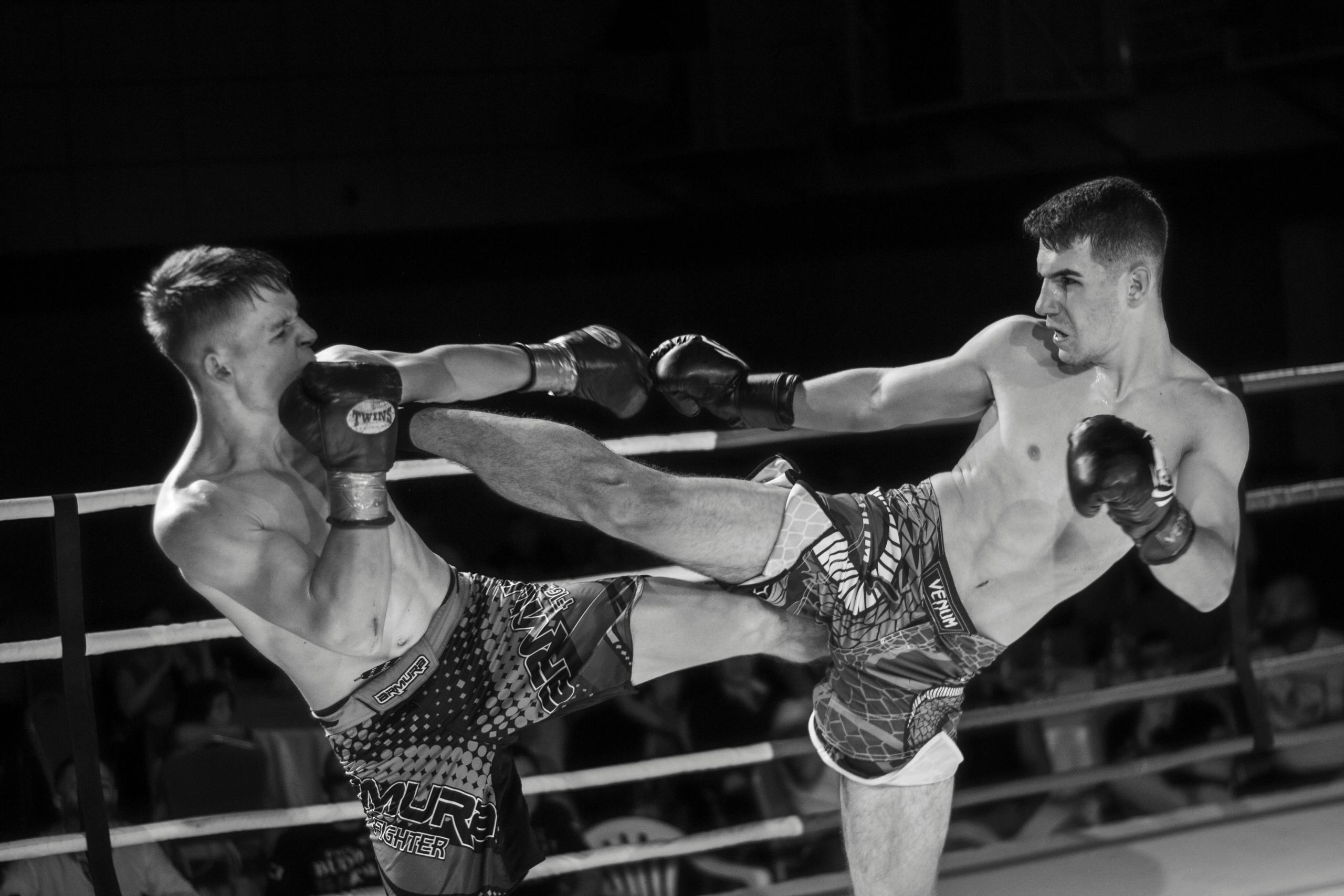The world of combat sports has transformed in recent years thanks to the emergence of two dominant forces, the Ultimate Fighting Championship (UFC) and the longstanding sport of boxing. While both UFC and boxing boast dedicated fan bases, their rivalry has sparked a debate about which sport holds the upper hand.
The rise of the UFC has disrupted boxing's long-standing dominance, prompting a captivating comparison between these two sports. In this analysis, we will explore their backgrounds, financial aspects, rules and future prospects to gain a comprehensive understanding of their distinctive characteristics.
For decades, boxing reigned supreme as the champion among combat sports captivating global audiences with legendary champions. However, times have dramatically changed with the ascent of the UFC. Gone are the days when boxing overshadowed its counterpart in mixed martial arts (MMA) as now this is a thing of distant memory.
The UFC's innovative approach to showcasing MMA has captured fans' imaginations around the world and revolutionised the combat sports industry as a whole. By staying attuned to audience preferences and embracing change, the UFC has surged ahead in the combat sports landscape while challenging boxing's dominance.
The rise of the UFC has completely transformed the world of combat sports, going beyond boxing arenas and captivating a new generation of fans. Not only has the success of the UFC changed people's perception of combat sports, but it has also redefined the competitive landscape between UFC and boxing.
With each passing day, the UFC gains momentum, gradually overshadowing boxing's dominance through its innovative approach and global appeal. The days when boxing held supremacy now feel like a memory as we enter a new era where both UFC and boxing coexist in an intensely competitive environment.
Explore the rich sporting legacy with 'A History of Boxing in Ireland,' delving into the milestones and stories that have shaped the country's enduring connection to the sweet science.


Comparing the popularity: Does UFC make more money than boxing?
Since combat sports are for the spectators just as much as they are for the competition, a fighter's financial success is an indicator of their popularity and worldwide appeal. While boxing has a history of pay-per-view events and high-profile fights, the UFC has quickly caught up in terms of generating revenue.
At times the UFC pay-per-view events along with its broadcasting agreements have propelled the organisation to new levels of financial achievement. We can probably all recall the blockbuster event that took the country by storm as Ireland's own Conor McGregor stepped into the octagon against the undefeated Jose Aldo.
The UFC's ability to attract an audience and its strategic expansion into new markets have played a significant role in its financial growth. The promotions, aggressive marketing tactics, and captivating events have firmly established it as a player in the sports entertainment industry.
Despite boxing having been around longer and having more established promotions, the UFC's innovative business model and its adaptability to changing consumer preferences have enabled it to compete on equal footing with boxing in terms of revenue generation.
The UFC's impressive revenue generation not only enhances its standing in the sports industry but also poses a substantial challenge to boxing's financial dominance. As the UFC continues expanding and building a fan base, the debate over which sport generates more money has become increasingly nuanced, reflecting the evolving dynamics between UFC and boxing.
The success of the UFC was catapulted by some massive names such as Conor McGregor, Anderson Silva, Georges St-Pierre and Jon Jones. These names brought with them new sets of fans that sold out just about any event that they participated in or had involvement in.
While UFC events might not yet be at the stage of generating the same revenue as the biggest boxing events, it does in fact put on far more events each year and as a result generates more revenue per annum as an organisation.
While they may not have competed in the UFC, these Irish boxing giants left a legacy that has kept boxing popular in Ireland.

Key differences: Rules between boxing and the UFC
When comparing boxing and the UFC, the most apparent differences lie in their rules and regulations.
Boxers wear much bigger padded gloves and cannot hit below the body. On the other hand, the UFC has smaller fingerless gloves and incorporates martial arts disciplines like wrestling, Brazilian jiu-jitsu, Muay Thai and more. This allows fighters to use a range of techniques including striking, grappling and submissions. For this reason, the UFC is considered by fans to be a more fair representation of a 'real fight'.
Another difference which separates UFC from boxing is in the format of the fights themselves. A UFC fight takes place in an octagon as opposed to the conventional 4 sided ring that we are used to seeing in the boxing world.
The duration of the fights is also an area where the sports differ from each other. UFC fights comprise three rounds, each round being a total of five minutes in length. Championship fights where the is a belt on the line or a main event fight will comprise five rounds. Boxing, on the other hand, lasts for 12 rounds, each only 3 minutes in length.
If neither fighter has finished the other by KO (knockout) or TKO (Technical Knockout) then the result will be determined by a panel of 3 judges. Judges will score the fight on a round-by-round basis based on the performance of the fighters.
Unlike boxing, the UFC rule-set allows for a display of martial arts skills by incorporating both stand-up striking and ground-based techniques. This distinction in rules contributes to the appeal of the UFC as a versatile and unpredictable form of competition.
The rule set of the UFC has revolutionised combat sports by providing a platform for fighters to demonstrate their proficiency in martial arts disciplines.
The contrasting rules between these two have not changed the dynamics of combat sports and have also added to the UFC's allure as a more flexible and unpredictable form of competition.
Financial comparison: Do boxers make more money than UFC fighters?
The financial situation for fighters in both boxing and the UFC has been a subject of discussion. In the past, boxing was known for offering high-profile fighters paydays, especially when they participated in anticipated matches.
However, the emergence of the UFC as a powerhouse in combat sports has brought about changes in how much mixed martial artists can earn.
Historically, boxing has been associated with million-dollar purses for its top-tier fighters. On the other hand, the UFC has made progress in increasing the financial compensation for its athletes.
The UFC's profitable pay-per-view model along with its sponsorship deals and performance-based bonuses has allowed top UFC fighters to earn paychecks that rival those of their boxing counterparts.
With that said, the UFC has been subject to scrutiny in the past for not paying its fighters in proportion to their worth. Recently, the organisation lost one of its most prized fighters, the heavyweight champion Francis Ngannu, due to contract disputes which led to the champion transitioning to the sport of boxing to fight Tyson Fury.
With that said, UFC has many more fighters and pays their fighters a much higher base pay than fighters might receive in boxing. So it would seem that at the lower level of the sport, fighters can earn a living more easily in the UFC, with the top of their athletes still unfortunately not coming close to some of the figures that the biggest names in boxing can pull in for a fight.
The financial landscape of combat sports has evolved due to the UFC business model and revenue streams providing an ever-growing playing field for fighters to secure earnings. The ability of the UFC to improve its athletes' financial prospects has changed the notion that boxing holds financial dominance, showcasing how economic dynamics have shifted within combat sports.
Shine a spotlight on empowerment and prowess in the ring with a tribute to notable Irish female boxers, acknowledging the talented women who have made significant contributions to the sport's evolution.

The rapid growth of the UFC: Factors and impact
The UFC's remarkable expansion can be attributed to a combination of factors that have propelled the organisation to the forefront of the combat sports industry. The UFC's innovative marketing and branding approach has played a key role in expanding its presence and cultivating a dedicated fan base.
With the rise of media and online streaming platforms, the UFC now enjoys access to global audiences. Leveraging technology’s power has significantly enhanced its visibility and engagement. What sets the UFC apart from boxing is its emphasis on promoting martial arts disciplines and creating captivating storylines. This approach has captivated a generation of fans broadening its appeal beyond expectations.
The impact of the UFC's growth reverberates throughout the sports industry by challenging established norms in combat sports and reshaping the landscape. Through innovation, adaptability and evolution, the UFC has solidified itself as a force in sports entertainment while setting new standards for success and growth.
The future of combat sports presents a scenario shaped by the rivalry between boxing and the UFC. While boxing's history and worldwide recognition continue to form its foundation, the UFC's relentless pursuit of progress and expansion has positioned it as a contender in the sports industry.
The changing preferences of audiences combined with the rise of media are reshaping how combat sports are consumed and experienced. This brings both challenges and opportunities for boxing and the UFC.
The rapid rise of the UFC has disrupted the norms of combat sports, completely transforming the landscape and shaping the future of athletic competition. Both the UFC and boxing continue to captivate audiences and inspire athletes, offering opportunities for collaboration, innovation and growth.
As fans of combat sports, we eagerly await what lies ahead for both boxing rings and modern octagons—a thrilling intersection combining tradition with innovation.
















